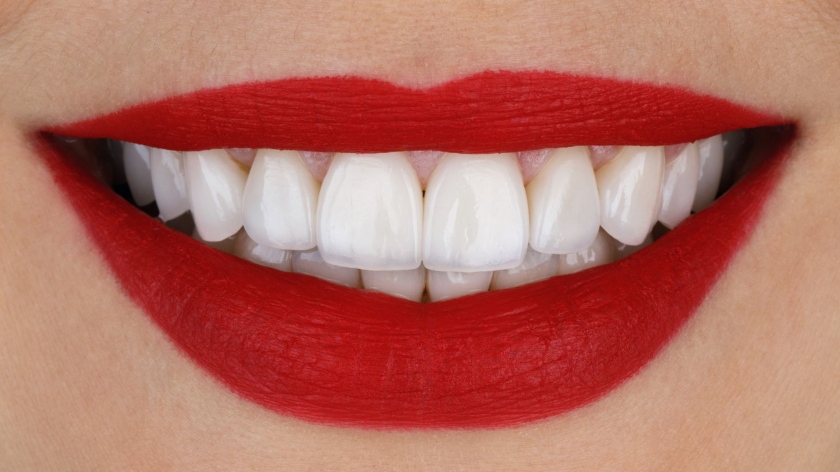Veneers versus crowns? If you’re hoping to improve how your smile looks, you’ve probably heard of both of these treatments. While these two options are popular choices for those looking to enhance the appearance, strength or function of their teeth, they’re not interchangeable.
Patients often ask about the differences between veneers and crowns, and we’re more than happy to help them navigate their choice. We’re fortunate to have an on-site dental lab which enables us to offer custom-milled crowns in as little as two days – a faster turnaround than most other clinics.
So, which option is right for you? Let’s break it down in our Smile Makeover Showdown.
Purpose: Cosmetic vs. Restorative
The biggest difference between crowns and veneers is what they’re used for.
- Veneers are customized covers, often made from ultra-thin porcelain and bonded to the front surface of teeth. They’re typically used for cosmetic purposes to improve such things as the shape or color of specific teeth or to conceal small gaps between them.
- Crowns, in contrast, are full-coverage restorations that cover the entire tooth from top to bottom. Dentists recommend them for teeth that are cracked, weakened, or severely decayed to provide aesthetic and structural support.
Such is their importance in restorative dentistry that, according to the American College of Prosthodontists, 2.3 million implant crowns are made each year in the US alone.
Appearance: Natural Looks Either Way
Both veneers and crowns can deliver stunning, natural-looking results—particularly when crafted from superior ceramic materials.
- Veneers made from high-quality porcelain closely resemble the translucent, light-reflective appearance of Hollywood smiles, which might give them a slight advantage over crowns. They’re perfect for healthy, intact front teeth needing a visual boost.
- Crowns are slightly thicker but can still be crafted to look almost identical to natural teeth. Our experienced lab team uses CAD/CAM technology to digitally design crowns that match the shape and shade of your existing teeth whilst boasting a seamless, precise and accurate fit. No one will ever spot the difference!
Tooth Preparation: How Much Gets Removed?
When it comes to veneers versus crowns, teeth have to be prepared before placing either option so that they fit flush in the smile line and align correctly with the bite. The amount varies from one patient to another depending on their oral situation.
- Veneers generally require minimal reshaping of the front surface, depending on the type of veneer and the patient’s teeth. Typically, around 0.25 mm of tooth enamel will be removed.
- Crowns usually require more preparation (especially if the tooth is severely damaged or heavily filled), about 1.5 to 2 mm, since they cover the entire tooth.
This is why veneers are often recommended for patients with healthy teeth looking for cosmetic improvements, while crowns are better for restoring strength to compromised teeth.
Durability & Longevity
With proper care, both veneers and crowns are long-lasting investments in your smile.
- Porcelain veneers have an average lifespan of between 10 and 15 years, although some patients may find they last longer. Their longevity depends on factors such as a patient’s lifestyle habits and oral hygiene practices.
- Crowns can last between 5 and 15 years, depending on the type of crown and its location in the mouth. A metal crown, for example, will last longer than a resin crown, which is sometimes used as a temporary restoration or when a patient has an allergy to materials used in other types of crowns.
However, keep in mind that lifestyle habits (like tooth grinding (bruxism) or chewing hard foods) can affect the lifespan of both.
Cost & Insurance Coverage -Veneers versus Crowns
Dental decisions often boil down to cost, and this is where dental crowns may edge into the lead.
- Veneers are considered elective. In other words, they’re not a necessity but more a cosmetic enhancement. For this reason, veneers are rarely covered by dental insurance. The national average for a single veneer is $1,765, but costs range between $500 and $2,895.
- Crowns, if medically necessary (e.g., for a damaged or decayed tooth), are often partially or fully covered by insurance. The national average cost ranges from $697 to $1,399, depending on the materials used.
At Mint Dental, our in-house crown milling lab helps reduce lab fees and overall treatment cost, and we’re happy to provide estimates based on your specific needs and insurance plan.
Turnaround Time: Fast Matters
Many traditional practices send crown cases to outside labs, which can mean 2–3 weeks of waiting and wearing a temporary crown. At Mint Dental, we eliminate that delay with our on-site digital lab.
That means we can design, mill, and place your crown in just two days, significantly cutting down the time (and the stress!) of treatment.
Who’s the Right Candidate?
Here’s a general guide:
- Choose veneers if your teeth are healthy but discolored, chipped, uneven, or slightly gapped—especially in the front.
- Choose a crown if your tooth is cracked, heavily filled, root canaled, or structurally weak and needs full coverage.
Of course, every smile is different. At Mint Dental, we take time to evaluate your oral health, smile goals, and budget to recommend the best option for you.
Final Thoughts: Talk to the Experts
Whether you’re dreaming of a brighter smile or restoring a damaged tooth, both crowns and veneers can help you get there. The key is understanding what each treatment offers and which one fits your situation best.
At Mint Dental, we combine modern technology with personalized care to give you a smile you’ll feel proud of. With our fast, in-house crown services, cosmetic expertise, and patient-first approach, we’re here to make your smile goals a reality.
Ready to take the next step?
Contact Mint Dental today at (907)891-8175 to schedule your consultation and let’s find the perfect solution for your smile. To learn more about our services, please visit our website.







